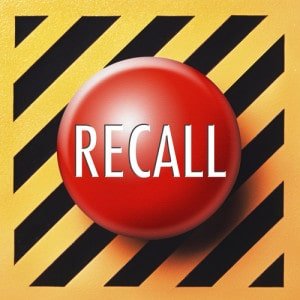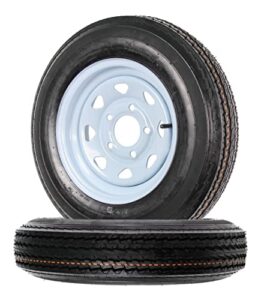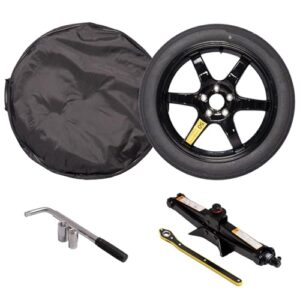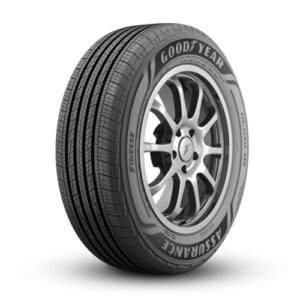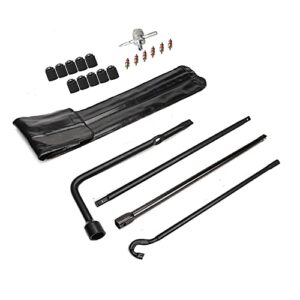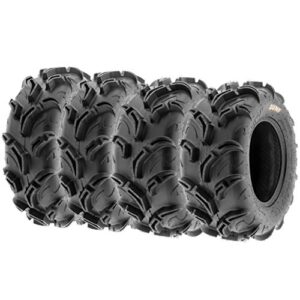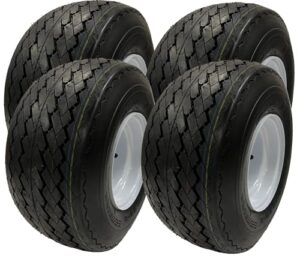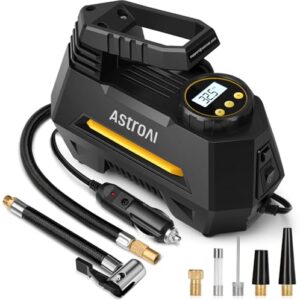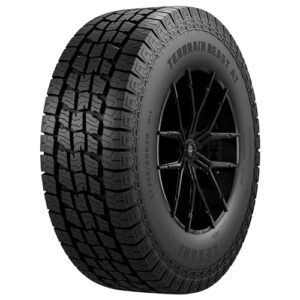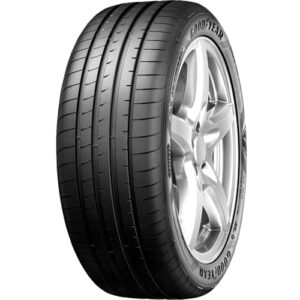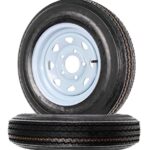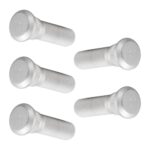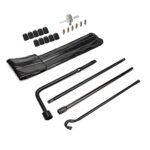To handle tire recalls, check the recall notice and contact the manufacturer or dealer for a replacement. Follow all safety guidelines.
Tire recalls are crucial for ensuring your safety on the road. Faulty tires can lead to accidents and severe damage. Understanding how to manage a tire recall can save you time and stress. Always stay informed about any recalls affecting your vehicle.
Keep an eye on official notices and act promptly. Contact your tire manufacturer or dealer as soon as you receive a recall notification. They will guide you through the replacement process. Ensure you follow the recommended safety guidelines to avoid any risks. Handling tire recalls efficiently can help maintain your vehicle’s performance and your safety.

Recognizing A Tire Recall
Knowing how to recognize a tire recall can save lives. Tire recalls happen due to defects that can cause accidents. Learn the signs to watch for and common causes.
Signs To Watch For
Here are some signs that may indicate a tire recall:
- Unusual Wear: Tires wear unevenly or too quickly.
- Cracks and Bulges: Noticeable cracks or bulges on the tire surface.
- Frequent Air Loss: Tires lose air pressure frequently.
- Vibration: Excessive vibration while driving at normal speeds.
Check for these signs regularly. They could indicate a defect in your tires.
Common Causes Of Recalls
Understanding the common causes of tire recalls can help you stay safe.
| Cause | Description |
|---|---|
| Design Flaws | Errors in the tire design can lead to recalls. |
| Manufacturing Defects | Issues during production can cause tire failures. |
| Material Issues | Substandard materials can lead to tire recalls. |
| Improper Labeling | Incorrect labels can cause usage errors, leading to recalls. |
Stay informed about these common causes. It ensures better safety for you and your loved ones.
Checking Recall Notices
Handling tire recalls is crucial for your safety. Knowing how to check recall notices is the first step. This section will guide you through the best ways to stay informed.
Online Resources
Several online resources can help you check tire recalls. The National Highway Traffic Safety Administration (NHTSA) website is a reliable source. You can visit their site and enter your tire’s DOT (Department of Transportation) number to check for recalls.
Other helpful websites include:
- Tire Manufacturer Websites: Check the website of your tire brand.
- Consumer Reports: Offers updates on tire recalls.
- Safety Websites: Sites like SaferCar.gov provide recall information.
These resources provide the latest recall notices and safety information.
Manufacturer Notifications
Tire manufacturers are required to notify you of recalls. Keep your contact information updated with the tire seller. Manufacturers often send recall notices via mail or email.
You may receive a letter detailing the recall. This letter will include important information, such as:
| Information | Details |
|---|---|
| Reason for Recall | Explains the issue with the tire |
| Steps to Take | Instructions on what to do next |
| Contact Information | Details on how to reach the manufacturer |
Follow the instructions in the recall notice promptly. This ensures your safety and compliance with the recall.
Inspecting Your Tires
Inspecting your tires is a crucial step in handling tire recalls. Proper inspection helps you identify any issues that might put you at risk. Follow these steps to ensure your tires are in good condition.
Identifying Tire Codes
Tire codes provide important information about your tires. These codes are usually located on the sidewall of the tire. The code includes the manufacturer, tire size, and the date of production.
- Manufacturer Code: Identifies who made the tire.
- Tire Size: Tells you the size of the tire.
- Date of Production: Shows when the tire was made.
Here’s a sample tire code: P215/65R15 95H. This code tells you the tire’s size and capabilities.
Spotting Defects
Check your tires for defects regularly. Common defects include cracks, bulges, and uneven wear.
| Defect Type | What to Look For |
|---|---|
| Cracks | Small lines or splits on the tire surface. |
| Bulges | Raised areas on the tire, indicating damage. |
| Uneven Wear | Tire tread wearing out more on one side. |
Use a flashlight to help spot these defects. If you find any, contact a professional for further inspection.
Contacting The Manufacturer
Handling a tire recall can be stressful. One of the first steps is contacting the manufacturer. This section will guide you through this critical step.
Customer Support Channels
Manufacturers offer various customer support channels to assist you. These include:
- Phone Support: Call the manufacturer’s toll-free number.
- Email Support: Send an email to their customer service team.
- Online Chat: Use live chat on their official website.
- Social Media: Reach out via their official social media accounts.
Choose the method that works best for you. Ensure you follow up if you do not receive a timely response.
Information To Provide
When contacting the manufacturer, have the following information ready:
| Information | Details |
|---|---|
| Tire Model | Provide the specific model number of the tire. |
| Purchase Date | Include the date you bought the tire. |
| Receipt | Attach a copy of your purchase receipt if possible. |
| Issue Description | Describe the problem you are experiencing with the tire. |
Providing accurate information helps the manufacturer assist you better. It speeds up the recall process significantly.
Arranging For Replacement
Handling a tire recall can be stressful. Arranging for replacement ensures your safety. This guide will help you understand the steps involved.
Authorized Dealers
First, find authorized dealers for your tire brand. Visit the manufacturer’s website. Check for a dealer locator tool. Authorized dealers follow specific guidelines. They ensure the correct replacement process. This step guarantees your tires meet safety standards.
Scheduling An Appointment
Once you identify an authorized dealer, schedule an appointment. Call the dealer or book online. Explain the tire recall situation. Provide your tire details and recall notice. This ensures the dealer is prepared. A scheduled appointment reduces waiting time.
| Step | Action |
|---|---|
| 1 | Find authorized dealers |
| 2 | Schedule an appointment |
| 3 | Provide recall notice |
| 4 | Confirm availability |
During the appointment, the dealer will inspect your tires. They will replace them if necessary. Ensure you ask about any additional costs. Most replacements should be free under recall.
Documenting The Process
Handling tire recalls can be daunting. Proper documentation ensures you stay organized and informed. Here’s how to manage the documentation effectively.
Keeping Records
Always keep detailed records of your tire recall process. Start by noting down the recall date and the affected tire model. Use a table to keep track of important details.
| Date | Tire Model | Issue | Action Taken |
|---|---|---|---|
| 2023-10-01 | XYZ123 | Tread Separation | Contacted Dealer |
Keep your purchase receipts and any communication records with the dealer or manufacturer. This documentation will be crucial for any claims or repairs.
Tracking Communication
Maintain a log of all communications related to the tire recall. Record the date, time, and person spoken to during each interaction.
- Call Date: 2023-10-02
- Time: 10:00 AM
- Contact Person: John Doe
- Notes: Discussed recall procedure
Using a simple log like this helps you keep track of important conversations. If there are any issues, you can refer back to your notes for clarity.
Emails should be saved in a dedicated folder. This way, you can easily find them when needed. Label each email with a clear subject line related to the recall.
By documenting the process, you ensure a smooth and organized tire recall experience.
Maintaining Tire Safety
Maintaining tire safety is crucial for every driver. Safe tires ensure a smooth and secure ride. You must know how to handle tire recalls effectively. This guide will help you maintain tire safety through regular inspections and proper maintenance.
Regular Inspections
Regular inspections help identify potential tire issues early. Follow these steps for a thorough inspection:
- Check tire pressure monthly.
- Look for visible damage like cuts or punctures.
- Inspect tread depth using a tread depth gauge.
- Ensure there are no bulges or blisters.
Regular checks help keep your tires in good condition.
Proper Tire Maintenance
Proper tire maintenance extends tire life and ensures safety. Follow these tips for maintaining your tires:
- Rotate your tires every 6,000 to 8,000 miles.
- Balance your tires to prevent uneven wear.
- Align your wheels as recommended by the manufacturer.
- Keep tires inflated to the recommended pressure.
Use this table to keep track of your tire maintenance schedule:
| Maintenance Task | Frequency |
|---|---|
| Rotate Tires | Every 6,000-8,000 miles |
| Balance Tires | As needed |
| Wheel Alignment | As recommended |
| Check Tire Pressure | Monthly |
Following these maintenance steps keeps your tires safe and reliable.

Legal And Financial Considerations
Handling tire recalls involves understanding both legal and financial aspects. These aspects ensure your safety and protect your rights. Being aware of them can save you time and money.
Warranty Claims
Many tires come with a warranty. This warranty covers defects and other issues. Check your tire warranty first. It often provides free replacements or repairs.
To make a warranty claim, follow these steps:
- Locate your purchase receipt.
- Document the tire issue.
- Contact the tire manufacturer.
- Provide necessary proof and details.
Keep all communication records. This helps if disputes arise.
Potential Compensation
In some cases, you may receive compensation. This depends on the severity of the recall. Compensation can include:
- Refunds for the purchase price.
- Reimbursements for related damages.
- Free tire replacements.
To seek compensation, gather all required documents. This includes receipts and proof of damage. Contact the tire manufacturer and present your case clearly.
Understanding these legal and financial steps can ease the tire recall process.

Frequently Asked Questions
What Procedures Are In Place For Handling Product Tire Recalls?
Manufacturers notify customers of tire recalls through mail and websites. Customers return affected tires to dealers. Dealers replace or repair tires at no cost.
Do Tire Recalls Expire?
Tire recalls do not expire. Manufacturers remain responsible for fixing recalled tires regardless of the time passed. Always check for recalls.
How To Handle A Recall On A Car?
Check the recall notice for details. Contact your dealership for a repair appointment. Repairs are usually free. Keep records of the repair.
How Long Does A Manufacturer Have To Fix A Recall?
Manufacturers typically have 60 days to fix a recall. This can vary depending on the issue’s severity.
Conclusion
Handling tire recalls ensures safety and peace of mind. Follow the steps, stay informed, and act promptly. Regular tire checks can prevent issues. Keep your vehicle’s performance top-notch by addressing recalls immediately. Your proactive approach can make all the difference.
Stay safe on the road!


